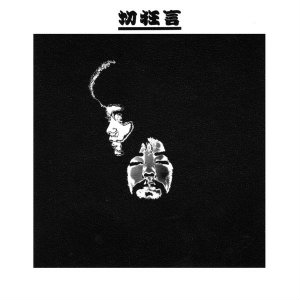Top Qs
Timeline
Chat
Perspective
Kirikyogen
1970 studio album by Kuni Kawachi & His Friends From Wikipedia, the free encyclopedia
Remove ads
Kirikyogen (Japanese: 切狂言, Hepburn: Kirikyōgen) is a 1970 album by Japanese musician Kuni Kawachi, credited to "Kuni Kawachi & His Friends" (クニ河内とかれのともだち, Kuni Kawachi to Kare no Tomodachi), though it is usually credited to "Kuni Kawachi & Flower Travellin' Band" on bootlegs.[1] The album showcases Kuni Kawachi's progressive rock influences, as well as the growing heavy metal sound that the Flower Travellin' Band were honing.
Remove ads
Overview
It is the first album released by Kuni Kawachi after leaving the group sounds band the Happenings Four.[2] Although usually co-credited to the Flower Travellin' Band on bootlegs, only vocalist Joe Yamanaka and guitarist Hideki Ishima took part in the album. It was recorded between Anywhere and Satori, before the band went to Canada.[3] Ishima later recalled that this was the first time he heard Yamanaka sing in Japanese, an experience he referred to as "strange".[4]
In 1971, the song "Works Composed Mainly by Humans" was reworked, renamed "Map" and released as a split single by Flower Travellin' Band without Kawachi, together with the song "Machine Gun Kelly" by American band Jo Mama.[2]
Kirikyogen was later released on CD by King Records in 1994.[5] In 2002, it was bootlegged under the name Music Composed Mainly By Humans,[2] which replaced "To Your World" with the live track "I'm Dead" and renamed "Classroom for Women" to simply "Classroom".[6] This bootleg also included "Map", as previously released by Flower Travellin' Band, instead of the original song "Works Composed Mainly by Humans".
Remove ads
Reception
Musician and author Julian Cope included Kirikyogen at number 25 on his list of the top 50 albums of Japanese rock, as found in his 2007 book Japrocksampler. He described it as an entire album of classic songs, with side one composed of "dry, spaced-out and highly original hard-rocking ballads" and side two being "possessed of a hitherto unseen acoustic side of Hideki Ishima's [guitar] playing."[7]
Hernan M. Campbell of Sputnikmusic wrote that with this album the Flower Travellin' Band began "cultivating a heavily dissonant guitar style that emphasized on a low-tuned sound and slower tempos, thus giving their music a more menacing characteristic." Together with Satori, he cited Kirikyogen as playing a part in the creation of doom metal.[8]
Remove ads
Track listing
Credits
- Kuni Kawachi - keyboards
- Joe Yamanaka - vocals
- Hideki Ishima - guitars
- Pepe Yoshihiro - bass
- Chito Kawachi - drums
- Yuya Uchida - producer
References
Wikiwand - on
Seamless Wikipedia browsing. On steroids.
Remove ads

